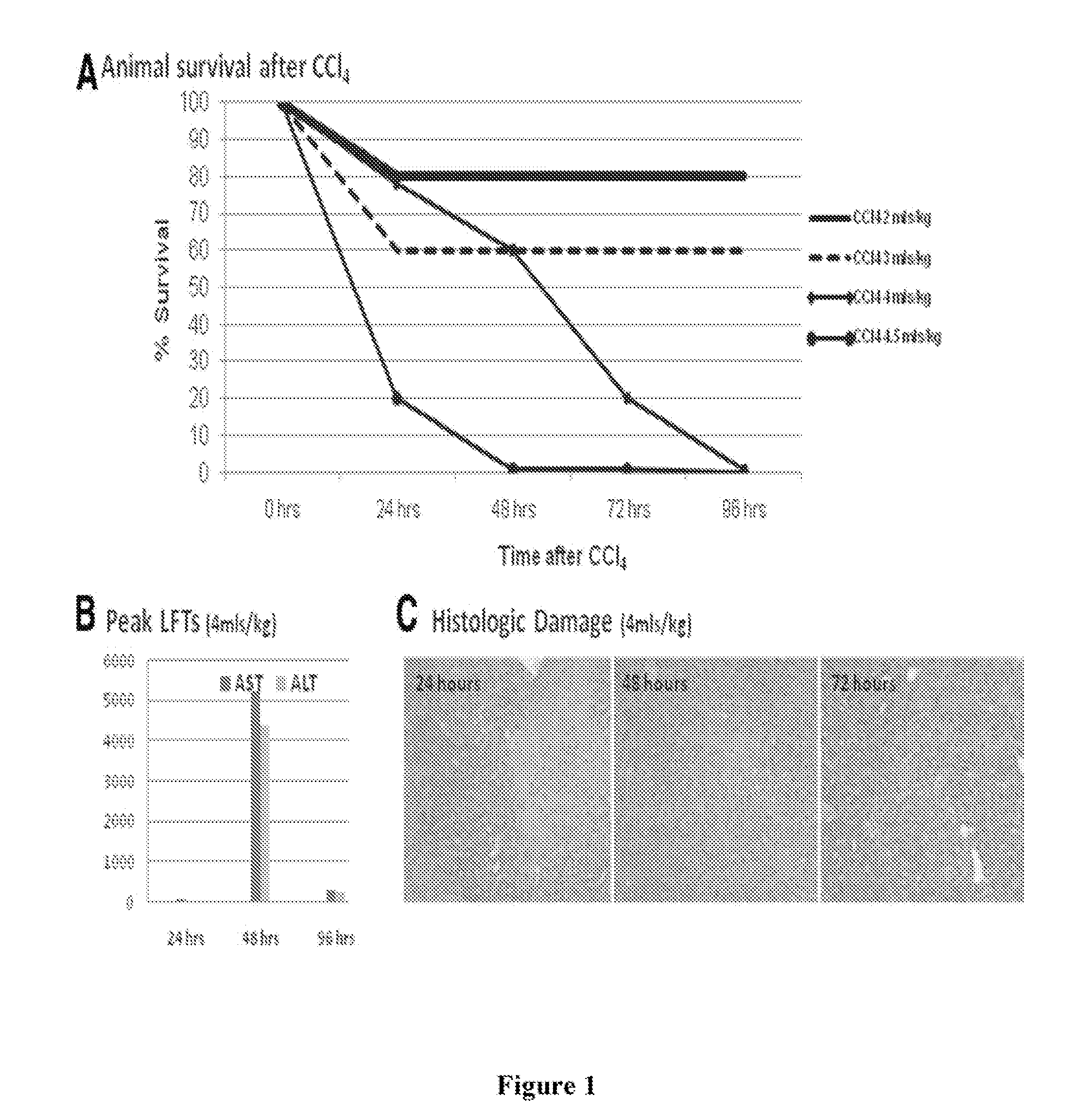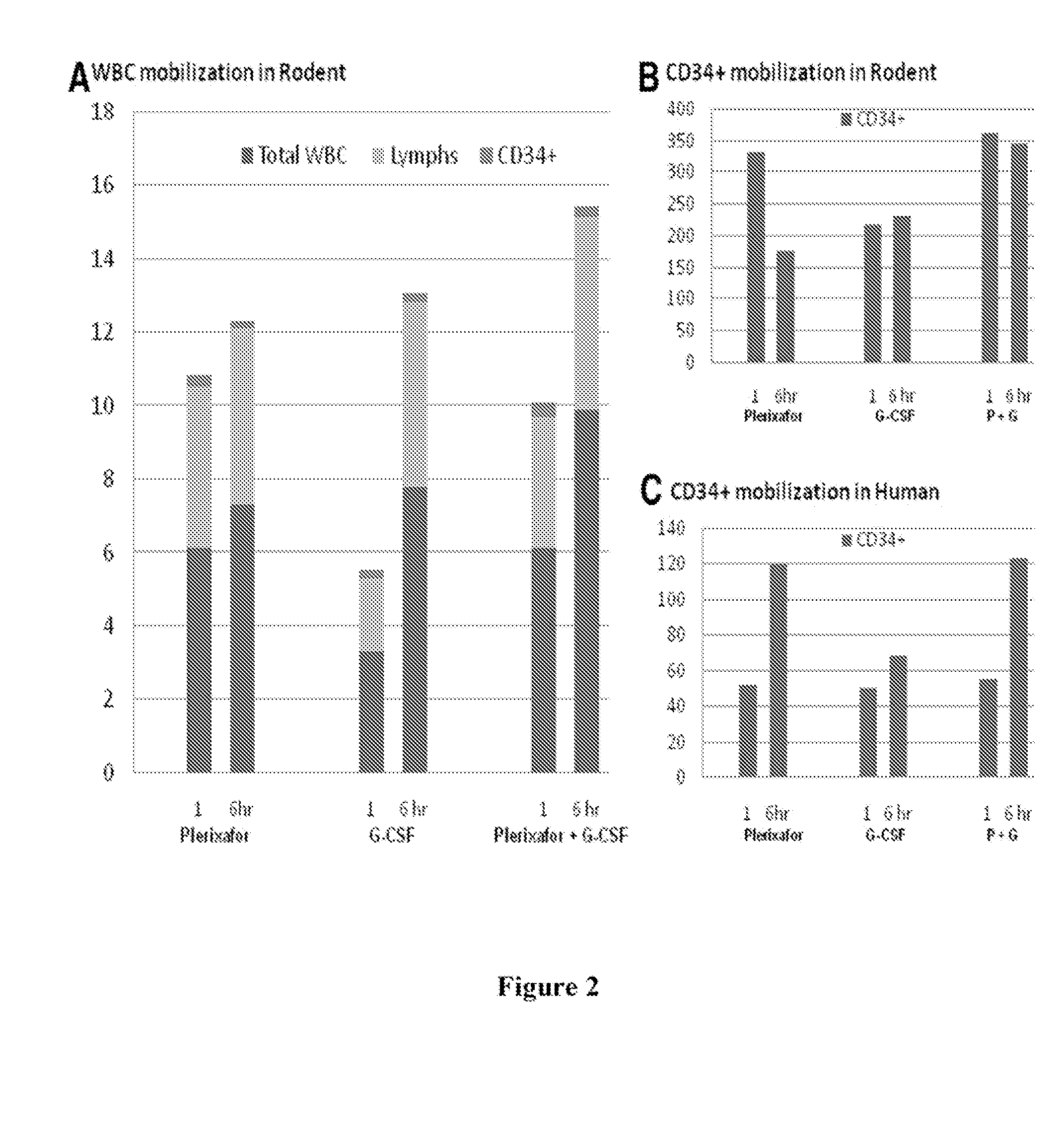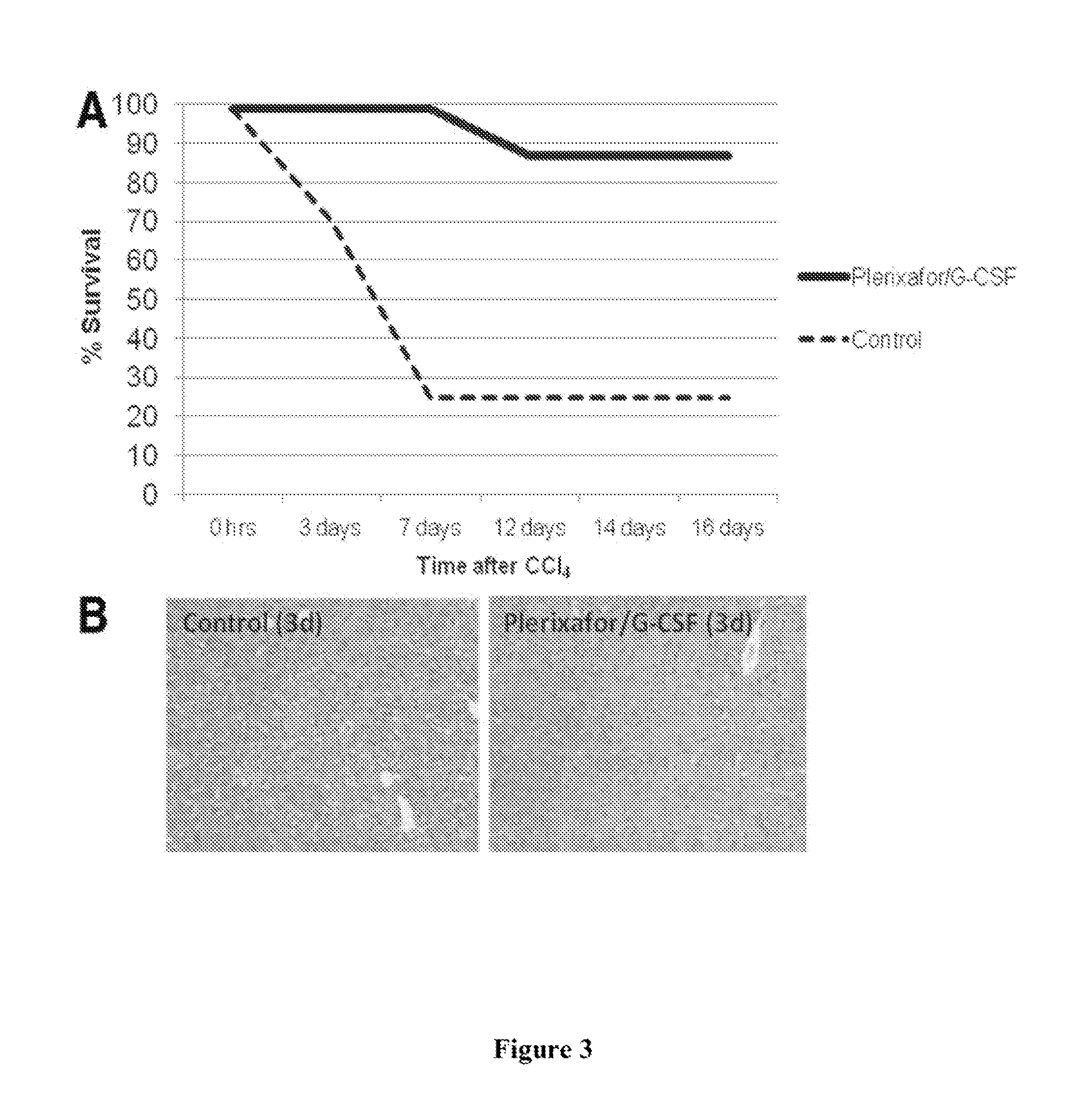Methods of treatment using stem cell mobilizers
a stem cell mobilizer and stem cell technology, applied in the field of stem cells, can solve the problems of inability to use pharmacologic or adjunct therapies in this clinical scenario, limited resources may be inaccessible, and the decision to proceed to transplantation is not always straightforward, so as to improve the appearance of cd34+ cells, reduce injury, and improve the effect of survival
- Summary
- Abstract
- Description
- Claims
- Application Information
AI Technical Summary
Benefits of technology
Problems solved by technology
Method used
Image
Examples
example 1
Carbon Tetrachloride (CCL4) Administration Recapitulates Acute Liver Failure (ALF) in Rodents
[0097]Animals that were treated with increasing amounts of CCL4 showed a dose-dependent decrement in survival (FIG. 1A). Groups of ten animals that were treated with 2 ml / kg routinely showed one or two mortalities per ten within the first one to two days after treatment. The large majority of animals in this group were transiently ill but rapidly regained vigor. Animals that received 3 ml / kg showed higher mortality rates, typically 3 or 4 animals died but reliably more than half recovered spontaneously. A dose of 4 ml / kg would result in about 60% to 100% mortality among the animals over the course of three to seven days. Slight adjustments in the dose (i.e., 4.5 ml / kg) at this level would have obvious effects on mortality with all animals succumbing within 24-48 hours.
[0098]A dose of 4 ml / kg was eventually selected for the final model. Mortality with this dose was typically about 80% around ...
example 2
Plerixafor and G-CSF Mobilize a Population of CD34+HSCs in Rodents
[0100]Rats that received either plerixafor or G-CSF showed an increase in their peripheral white blood cell (WBC) counts at 1 and 6 hours (FIG. 2A). Animals receiving plerixafor alone had an average total WBC of 6,100 at one hour (n=3) and 7,300 at 6 hours (n=3). Animals receiving G-CSF alone had average total WBCs of 3,300 at 1 hour (n=3) and 7,800 at 6 hours (n=3). Animals receiving both drugs had an average total WBC count of 6,000 at 1 hour (n=3) and of 9,900 at 6 hours (n=3).
[0101]The lymphocyte compartment, which is thought to contain the majority of HSCs showed similar changes (FIG. 2A). Animals receiving plerixafor had total lymphocyte counts of 4,400 and 4,800 at one and six hours respectively. Animals receiving G-CSF had total lymphocyte counts of 2,000 and 4,100 at one and six hours respectively. Animals receiving both drugs had total lymphocyte counts of 3,600 and 5,200 at one and six hours respectively.
[0...
example 3
Stem Cell Mobilization Improves Survival in an Animal Model of ALF
[0104]Rodents (n=8) that were administered intraperitoneal CCl4 (4 ml / kg) displayed a high rate of mortality (75% at 6-7 days) consistent with the model. In contrast, animals (n=8) that received an identical injury (4 ml / kg) but twelve hours later initiated plerixafor (2 mg / kg / d×3 d) and G-CSF (300 μg / kg / d×3 d) survived at a much higher rate (13% mortality) (FIG. 3A). Examination of liver specimens from intentionally sacrificed animals from the treated and untreated groups after injury showed lesser histologic injury in the group that had received stem cell mobilization (FIG. 3B).
PUM
| Property | Measurement | Unit |
|---|---|---|
| molecular weight | aaaaa | aaaaa |
| molecular weight | aaaaa | aaaaa |
| molecular weight | aaaaa | aaaaa |
Abstract
Description
Claims
Application Information
 Login to View More
Login to View More - R&D
- Intellectual Property
- Life Sciences
- Materials
- Tech Scout
- Unparalleled Data Quality
- Higher Quality Content
- 60% Fewer Hallucinations
Browse by: Latest US Patents, China's latest patents, Technical Efficacy Thesaurus, Application Domain, Technology Topic, Popular Technical Reports.
© 2025 PatSnap. All rights reserved.Legal|Privacy policy|Modern Slavery Act Transparency Statement|Sitemap|About US| Contact US: help@patsnap.com



